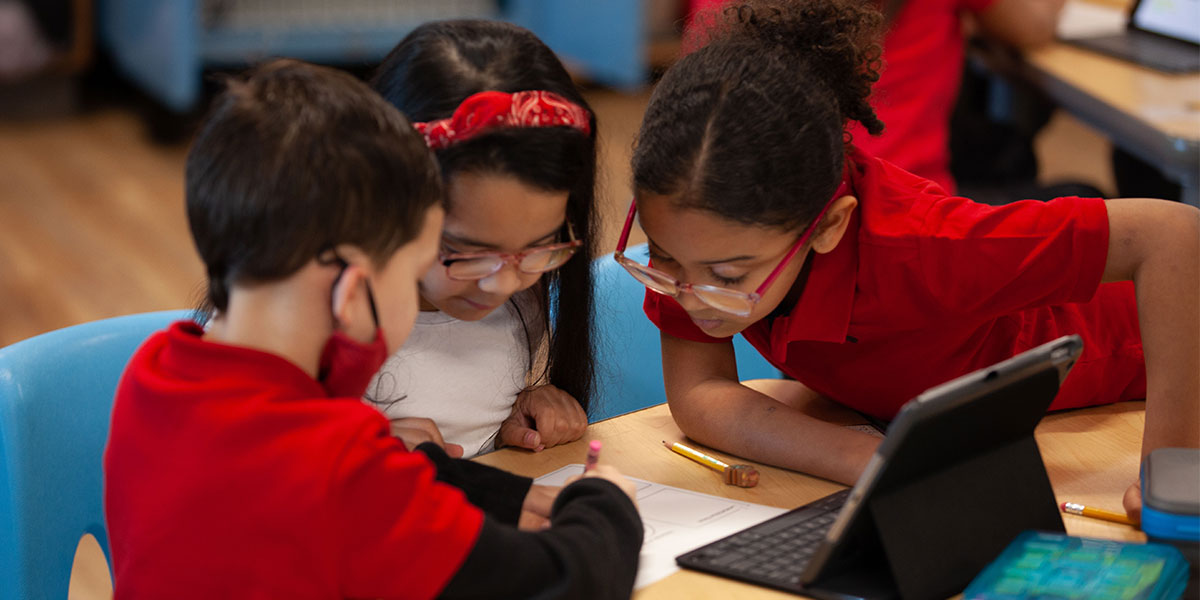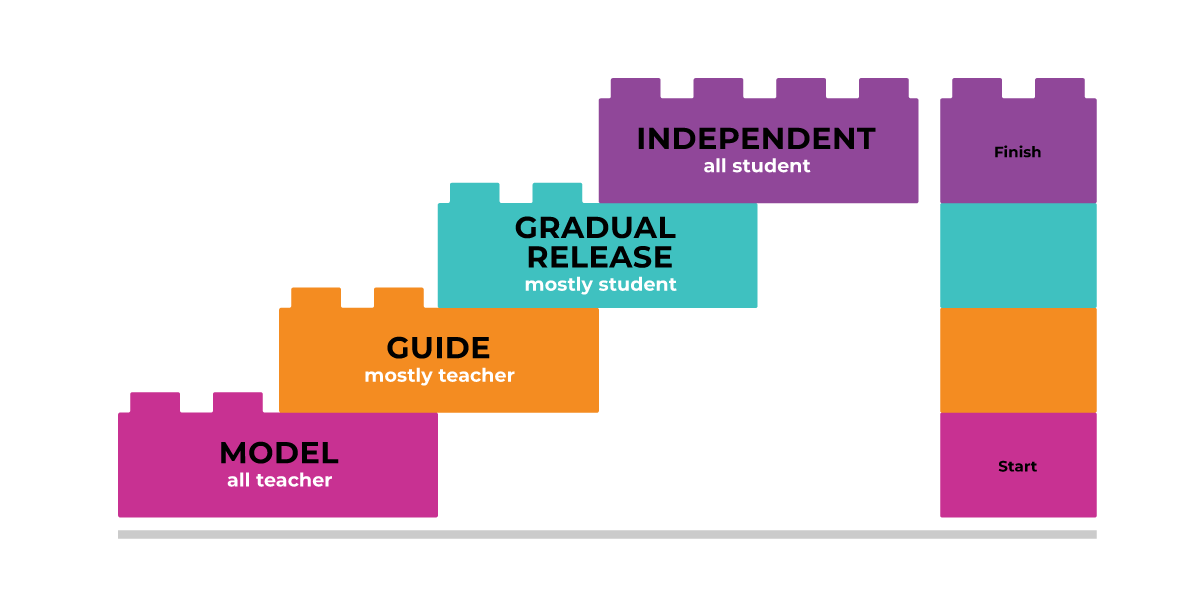A Closer Look at Small-Group Instruction
A literacy block in elementary classrooms typically includes whole-class and small-group instruction. During whole-class instruction, teachers focus on providing a robust dose of explicit instruction on new content, concepts, skills, and strategies while building on previous learning or reviewing previously taught material that many students did not fully understand. During small-group instruction, the focus is on addressing learning opportunities for students who need extra practice and support to reach mastery or to provide opportunities for students who need to stretch beyond the whole-class content.
Educators often refer to small-group instruction as guided reading; however, the practices of guided reading and small-group instruction differ. While many guided reading practices aren’t backed by research, there are many research-based best practices that can be deployed during small-group instructional time, as outlined in the chart below.
| Guided Reading | Small-Group Instruction |
|---|---|
| Groups are formed based on students’ “instructional" reading level, which is determined by a running record assessment. | Based on formal and informal assessments, students are grouped by their areas of need related to a skill or strategy. |
| Instruction centers around books at students’ “instructional” level. | Instruction employs grade-level texts that contribute to knowledge building. |
| Teachers guide students as they read through their “instructional” leveled books. | Teachers provide explicit instruction and scaffolding while students work with complex texts. |
| Students are taught to use the “three cueing” (MSV) to figure out unknown words. | Students use a variety of reading strategies, including strategies for decoding words. |
| The goal is to advance “instructional” levels. | The goal is for students to read and make meaning from complex, grade-level texts. |
| Students are regrouped as their level changes based on running records. | Students are regrouped based on formal and informal assessments related to skill or strategy needs. |
How to Maximize Your Small-Group Instruction Time
Small-group instruction is a “must-have” in structured literacy classrooms, and making small shifts away from guided reading will align sessions with the latest research to support reading proficiency. Here are a few tips to help you transition to small-group instruction and boost literacy in your classroom:
- Use the data from regular formal and informal assessments to form small reading groups rather than relying on running records.
- Evaluate student progress on an ongoing basis, rather than three times a year, so groups are fluid and targeted to address immediate needs.
- Regroup students regularly depending on instructional needs, not by reading level.
- Teach from grade-level texts that are conceptually related to a topic being studied rather than using random leveled books.
- Teach strategies that help students grapple with grade-level or complex texts and support the five pillars of literacy backed by the Science of Reading.
- Teach decoding strategies for reading unknown or unfamiliar words instead of using three cueing (MSV).
Benefits of Small-Group Instruction

- Accelerate literacy development by challenging students with complex texts
- Students can have rich discussions about grade-level text
- Encourage students to feel safe in a smaller group setting to take risks
- Work on strategy-based instruction to strengthen reading comprehension
- Work on skills based on phonological awareness, phonics, fluency, vocabulary, and comprehension
How to Implement Skill-Based Small-Group Instruction
- Use informal and formal assessments to identify small-group instruction needs for:
- Choose texts and passages that:
- Are related to the theme, topic, or content area so that the texts contribute to knowledge building
- Provide explicit opportunities for teaching and practicing the needs of the small-group that are at grade-level or complex enough for you to provide the scaffolding needed to teach students
- Extend learning and understanding by engaging students in:
- Planning what sections of the text will be read and why
- Using the gradual release method to model your thinking as you teach
- Observing students reading the text and demonstrating the skill or strategy you are teaching
- Asking questions that engage all group members in discussions about the text
Moving from Teacher-Led Instruction to Independent Practice

What are Other Students Doing While You Are Teaching Small Groups?
As small-group instruction is happening, make sure to provide the rest of the class with independent activities to keep them practicing skills and strategies learned during whole-class instruction and reinforced in small-group instruction by:
- Incorporating texts that build knowledge
- Utilizing texts that support phonics instruction
- Ensuring the text includes words to decode and encode patterns while working on vocabulary
- Allowing students to respond to reading with writing
If you want to get started right away with shifting to a small-group instructional approach, Learning A-Z offers texts based on grade level, content area reading, and phonics patterns for students to read on their own or in groups.


